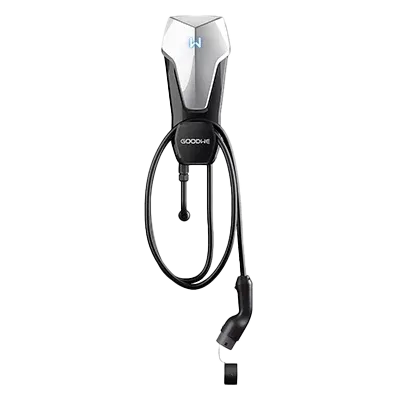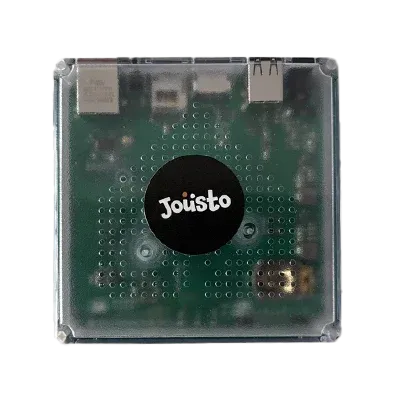
GoodWe EV Charger 7kW
Single-phase AC charger (IP66), perfect for most Aussie homes. Pair with Energy Hub for solar-aware charging.
Choose a charger, add the Jousto Energy Hub to charge from sunshine and cheap off-peak power, then book installation. Simple, smart, and ready for every EV.

Quality hardware, great value — and smarter with the Jousto Energy Hub.

Single-phase AC charger (IP66), perfect for most Aussie homes. Pair with Energy Hub for solar-aware charging.

Faster AC charging for three-phase homes and EVs that support higher rates. Solar-smart with Energy Hub.

Make charging solar-aware on day one. Includes Genius Agent to guide your self-setup & automations.
Learn more about the Jousto Home Assistant Genius.
Choose your charger
Pick 7kW or 22kW GoodWe model.
Add the Energy Hub
$249 with Genius Agent for self-setup.
Checkout online
We’ll confirm details and schedule install.
Charge on sunshine
Smart modes for solar and off-peak.

With energy prices continuing to rise across South Australia, many households are seeking smarter ways to monitor and manage their electricity usage. From soaring grid rates to volatile feed-in tariffs, homeowners are becoming more conscious of the financial and environmental implications of their energy decisions.
Enter Home Assistant—an open-source home automation platform offering powerful energy management tools that are rapidly gaining popularity in the state. When integrated with solar panels, batteries, dynamic pricing feeds, and services like Jousto, Home Assistant can transform a standard household setup into a highly efficient, cost-saving energy ecosystem.
This blog explores how South Australians are using Home Assistant to tackle high energy bills, maximise solar returns, and automate everyday decisions around energy use. Whether you’re already solar-savvy or just starting out, this deep dive will help you take full control of your home’s energy management.
At the heart of Home Assistant is its Energy Dashboard—a user-friendly visual interface that consolidates all energy-related data into one central view. It enables homeowners to:
Track real-time grid import and solar export
Monitor battery charge and discharge cycles
View device-level consumption
Analyse historical usage trends
This visibility is vital. It turns guesswork into insight, allowing residents to make informed, data-backed decisions about their energy habits.
South Australians can integrate a range of energy hardware and services into Home Assistant, including:
Solar inverters
Battery systems
Smart plugs and meters
Gas and water meters
Home Assistant also supports manual and automatic configurations via its native integrations or YAML-based setups. For devices that only report instantaneous power (Watts), it can calculate energy usage over time (kWh) using the Riemann Sum integration, extending compatibility across more equipment types.
By building a complete picture of your home’s energy flows, Home Assistant provides the foundation for true energy optimisation.
South Australia leads the nation in rooftop solar adoption. With generous sunlight and relatively high daytime tariffs, there’s a clear incentive to maximise solar self-consumption—and Home Assistant is a key enabler of that goal.
Popular inverters like Fronius, GoodWe, SMA, and SolarEdge can be connected to Home Assistant through APIs, HACS (Home Assistant Community Store) integrations, or custom setups. For example:
Fronius: Offers direct API integration
GoodWe: Connect via SEMS Portal using HACS
SolarEdge: Cloud-based integration options
For brands with limited native support, tools like Node-RED offer custom flows to pull in data.
Integrate Forecast.Solar to predict your PV output based on local weather data. You can then schedule power-hungry devices to run during high-production windows—e.g., pool pumps or washing machines between 11am–3pm.
South Aussies frequently share Home Assistant solar setups on forums and Reddit. Popular topics include:
Load shifting automations
Solar export optimisation
Multi-inverter system integration
Configuration templates
This community-led knowledge sharing makes Home Assistant one of the most adaptable tools available for local energy management.
With many SA homeowners adding batteries to their solar systems, Home Assistant becomes even more powerful.
Home Assistant supports batteries from:
Tesla Powerwall
SonnenBatterie
BYD
AlphaESS
Its automation engine allows users to:
Charge the battery during peak solar production
Discharge during evening peaks or high tariff windows
Prevent battery drain during low-price or negative price events
These actions are often triggered dynamically based on solar output, real-time pricing, and personal schedules.
Some residents participate in VPPs, which pool household batteries to stabilise the grid and generate returns. Home Assistant can monitor and sometimes even control participation.
While VPPs can be financially attractive, users should consider:
Potential impact on battery lifespan
Data privacy and system override concerns
Compatibility with automation goals
Accessing smart meter data in SA can be tricky, but it’s not impossible.
Devices like Home Assistant Glow (powered by ESPHome) read the LED flashes on your smart meter—translating them into real-time energy use stats.
Some smart meters support Zigbee HAN (Home Area Network). Devices like Rainforest Eagle have been used in other states to access real-time data, but support in SA varies.
Community experiments continue, with many users reverse-engineering retailer apps or using third-party CT clamp devices like:
Shelly EM
IotaWatt
These provide whole-house energy monitoring and are often more accessible than direct meter integration.
Jousto is a South Australian energy automation service that enhances Home Assistant’s energy management features with local expertise and real-time market logic.
Jousto uses real-time solar data and forecast integrations to:
Run appliances (e.g., water heaters, EV chargers) during solar surplus periods
Reduce grid imports during high-tariff hours
Curtail exports during negative price events to avoid penalties
Integrated with plans from providers like Amber Electric and Local Volts, Jousto enables:
Battery charging during negative-price periods
Automated discharging when prices spike
Inverter export limit adjustments to avoid low feed-in returns
Jousto works with most inverters and battery systems and can assist with compatibility assessments. Their system enhances the economic return on solar and batteries without requiring daily user interaction.
South Australians are increasingly active in Home Assistant forums, sharing:
YAML automation scripts
Pricing-based appliance scheduling
Battery management strategies
Workarounds for local smart meter limitations
Example: One Reddit user automates pool pump operation based on Amber Electric’s forecasted pricing, ensuring it only runs during low-cost hours.
These shared learnings help reduce bills, optimise solar use, and create robust automation frameworks customised for SA homes.
SA has specific rules that influence your energy management decisions.
Single-phase: 10kW inverter limit
Three-phase: 30kW limit
Flexible exports: Up to 10kW per phase (requires reliable internet)
Without internet: Fixed export cap of 1.5kW per phase
FiTs are voluntary and vary widely by provider. Some high FiT retailers in 2025 include:
Energy Australia
AGL
Tango Energy
Due to variability and decreasing rates, self-consumption has become a more profitable focus—reinforcing the need for smart automation.
Programs like Energy Masters provide tech and incentives for home energy management. Participants receive smart devices and HEMS (Home Energy Management System) signals to reduce grid strain and shift demand during peak times.
The real magic of Home Assistant lies in its ability to automate energy use around real-world conditions. Here’s how:
Use solar forecasts to:
Run washing machines, dishwashers, dryers during peak solar hours
Pre-heat or pre-cool homes using climate automations
Charge EVs while the sun is shining
With Amber Electric or Jousto, trigger:
Battery charge when prices are negative
Appliance delay when prices spike
Smart plugs to enable only during low-cost hours
You can assign priority levels to different devices. For example:
Pool pump (low priority)
Hot water system (medium)
Fridge/freezer (always on)
EV charger (conditional on pricing)
Home Assistant automates which device gets power and when—without user intervention.
Here’s a quick reference guide to help you get the most from Home Assistant for energy management in South Australia:

For South Australian households navigating rising energy bills, Home Assistant represents more than just a smart home tool—it’s an energy management powerhouse. From solar and battery automation to dynamic pricing optimisation and appliance scheduling, Home Assistant enables precise control and deep visibility.
When paired with local services like Jousto, the platform becomes even more powerful—automating decisions based on real-time energy conditions and wholesale pricing signals unique to the SA grid.
While setting up Home Assistant does require some upfront investment in time or equipment, the long-term savings, increased solar self-consumption, and grid independence make it a highly rewarding solution.
The key takeaway? Don’t just monitor your energy—automate it. Home Assistant gives South Australians the tools to take back control, reduce costs, and build a smarter, more sustainable energy future at home.
Want to get even more from your solar, battery, and Home Assistant setup in South Australia? Jousto offers powerful local solutions to help you cut bills, automate energy use, and take back control from rising electricity prices.
Optimise energy use automatically. Jousto integrates with Home Assistant to intelligently shift appliance usage, battery charge cycles, and inverter settings based on solar forecasts and real-time electricity prices.
👉 Discover what Jousto can do for you
Avoid penalties with solar curtailment. Exporting during negative price events? Jousto’s Solar Curtailment Device helps you pause exports during unfavourable price windows—saving money and protecting your returns.
👉 Learn more about solar curtailment in SA
Stop reacting to energy prices—start automating around them. Jousto makes it easy.

© Copyright 2025.Honen Lead Generation.
All Rights Reserved.
Phone: 0489 261 333
185 Morphett St, Adelaide, SA, 5000